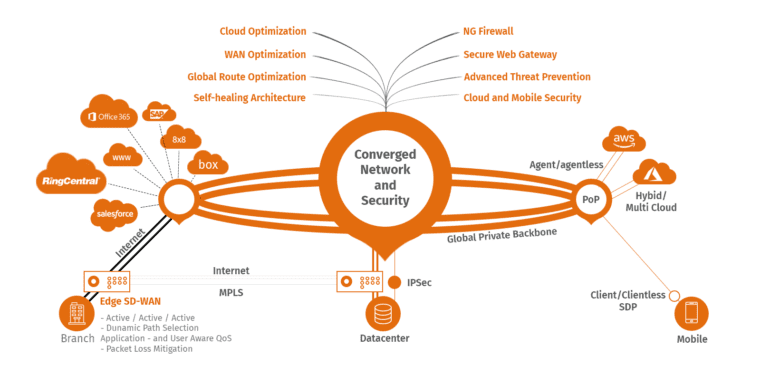TL;DR:
- Cato Networks introduces real-time deep learning algorithms for threat prevention as part of Cato IPS.
- The algorithms leverage Cato’s cloud-native platform and vast data lake to identify malicious domains used in phishing and ransomware attacks.
- Cato’s algorithms outperform reputation feeds alone, detecting nearly six times more malicious domains.
- Deep learning algorithms block access to newly registered domains and combat brand impersonation.
- Cato’s cloud-native architecture provides the necessary computing resources for real-time deep learning.
- Extensive training data from Cato’s data lake enhances the precision of the deep learning algorithms.
- Cato Research Labs observes a significant improvement in threat detection, identifying a six-fold increase in DGA domains.
- The real-time deep learning algorithms are part of Cato’s comprehensive multilayered security protection.
- Cato’s integration of AI and ML technologies strengthens offline analysis and threat identification.
Main AI News:
In a groundbreaking move, Cato Networks, the leading provider of a comprehensive SASE platform, has unveiled its real-time, deep learning algorithms as part of the Cato IPS solution. These state-of-the-art algorithms harness the power of Cato’s unique cloud-native infrastructure and vast data lake to deliver highly precise identification of malicious domains, commonly exploited in phishing and ransomware attacks. Remarkably, during testing, the deep learning algorithms outperformed reputation feeds alone by uncovering nearly six times more malicious domains. Avidan Avraham, Cato’s Security Research Manager, and Asaf Fried, Cato’s Data Scientist, recently presented their pioneering work on employing machine learning to detect C2 communications at the esteemed AWS Summit in Tel Aviv.
Harnessing the Potential of Deep Learning to Combat Phishing and Ransomware Threats
The ability to identify malicious domains and IPs in real-time is paramount in the ongoing battle against phishing, ransomware, and other cyber threats. The traditional approach of relying solely on domain reputation feeds to categorize and pinpoint malicious domains has proven grossly inadequate due to the rapid proliferation of domain generation algorithms (DGAs). Attackers can now swiftly generate new domains that lack any established reputation, rendering reputation feeds unreliable. Moreover, users unknowingly continue to fall victim to malicious domains that cleverly mimic well-known brands, such as “microsoftt[dot]com” or “amazonlink[dot]online.” Since these domains lack reputation as well, relying solely on reputation feeds for detection is an increasingly futile endeavor.
Cato’s cutting-edge real-time, deep-learning algorithms effectively tackle both challenges head-on. By identifying newly registered domains that users rarely visit and possess letter patterns commonly found in DGAs, these algorithms effectively block access to DGA-associated domains. Furthermore, Cato’s algorithms combat cybersquatting by diligently scrutinizing domains that exhibit letter patterns reminiscent of renowned brands. The algorithms go the extra mile by examining various components of webpages, such as favicons, images, and text, to thwart brand impersonation attempts.
Revolutionizing Network Security through Cloud-Native Architecture
Cato’s groundbreaking advancements in network security are made possible by its innovative cloud-native architecture. Real-time deep learning algorithms require substantial computational resources to ensure a seamless user experience, and Cato’s SASE Cloud delivers precisely that. In a matter of milliseconds, Cato diligently inspects data flows, extracts destination domains, evaluates their associated risks, and generates results without disrupting user activities.
To train deep learning models effectively, extensive training data is essential. This critical resource is readily available in the form of Cato’s massive data lake that underpins the entire Cato SASE Cloud ecosystem. Derived from metadata collected from every flow transiting through Cato, this data lake is enriched further by aggregating information from over 250 threat intelligence feeds. By analyzing patterns across all Cato customers, the deep learning algorithms gain invaluable insights that are augmented by custom analyses derived from individual customers’ traffic. The result is an unparalleled level of precision and algorithmic identification of suspicious domains.
Real-time Deep Learning Unleashes a 6X Leap in Threat Detection.
Cato Research Labs routinely observes tens of millions of network connection attempts to DGA domains originating from over 1,700 enterprises leveraging the Cato SASE Cloud. For instance, in a recent sampling period, out of 457,220 network connection attempts to DGA domains, only 66,675 (15 percent) were identified by the 250+ threat intelligence feeds consumed by Cato. In stark contrast, Cato’s algorithms successfully identified the remaining 390,000+ DGA domains, a staggering nearly six-fold improvement in detection efficacy.
Real-time, Deep Learning: One Part of Cato’s Multilayered Security Shield
Cato’s real-time, deep learning algorithms represent just one facet of the formidable security protection offered by the Cato SASE Cloud. Leveraging a comprehensive suite of cybersecurity technologies, including SWG, NGFW, IPS, NGAM, CASB, DLP, RBI, and ZTNA, Cato delivers a multitiered defense mechanism that thwarts exploitation attempts and effectively neutralizes cyberattacks at multiple points within the esteemed MITRE ATT&CK Framework.
Conclusion:
Cato Networks’ introduction of real-time deep learning algorithms marks a significant advancement in the field of network security. By leveraging its cloud-native platform and extensive data resources, Cato has revolutionized threat prevention by accurately identifying malicious domains and enhancing protection against phishing and ransomware attacks. The algorithms’ superior performance compared to reputation feeds alone demonstrates their effectiveness in combating evolving cyber threats. With improved threat detection, precise identification of suspicious domains, and a comprehensive security suite, Cato Networks is poised to capture a substantial share of the network security market. Their innovative use of AI and ML technologies positions them as a leader in providing advanced, proactive security solutions for enterprises worldwide.

